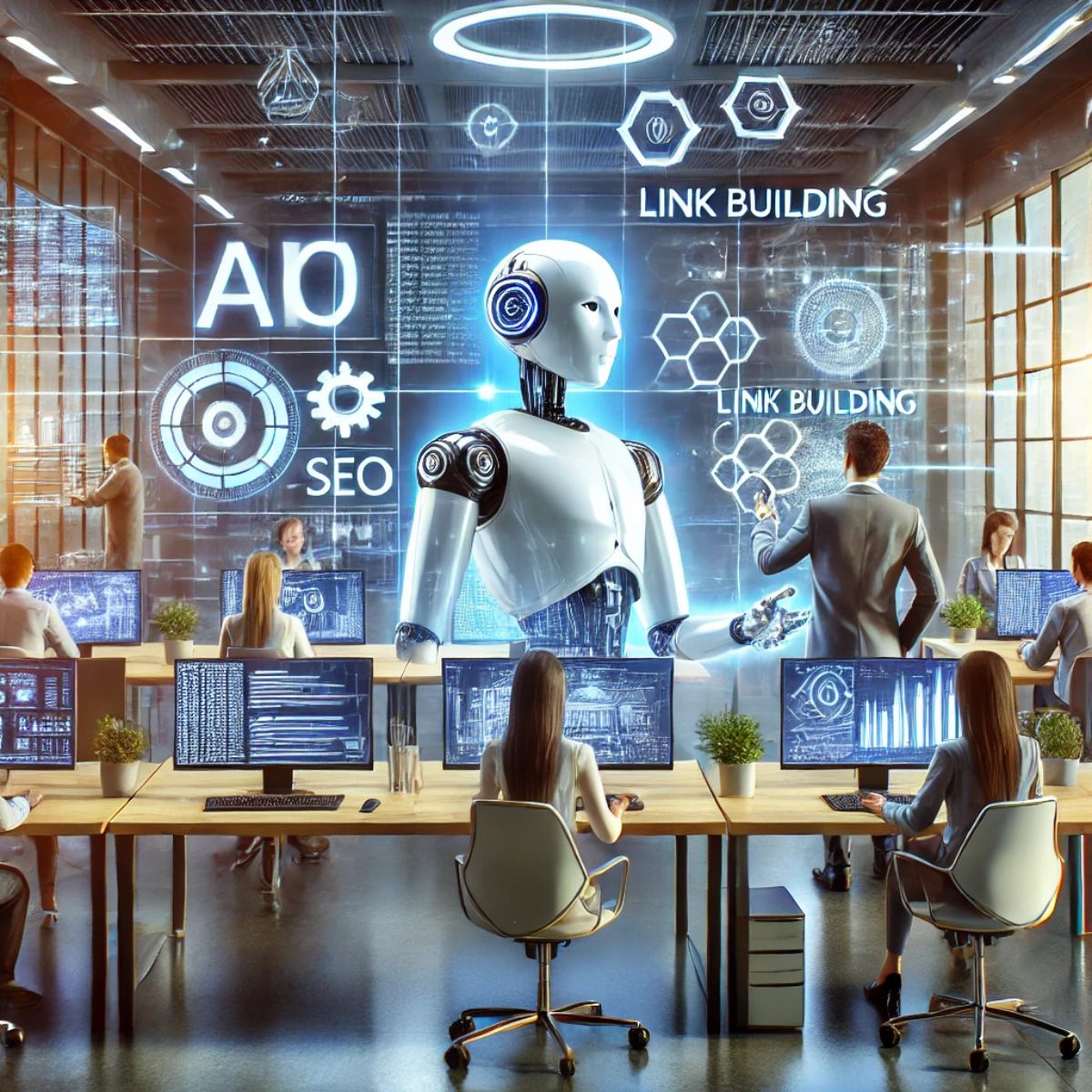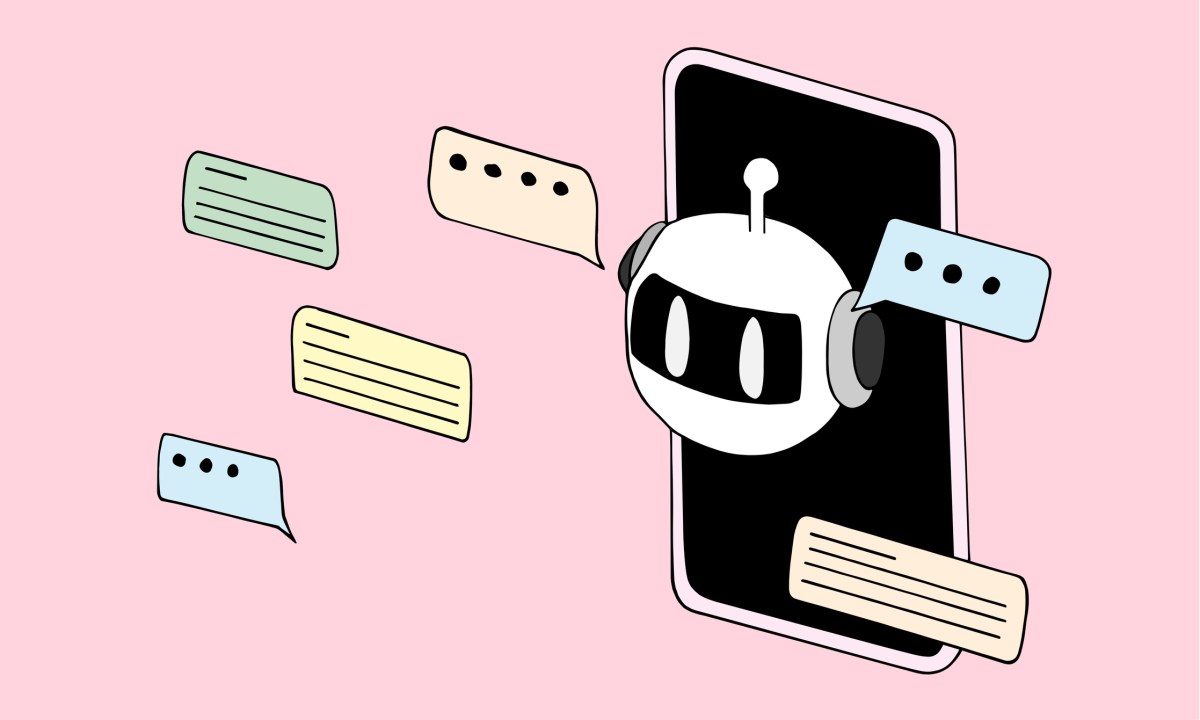This AI-powered robot spells the end to one of the most dangerous urban jobs
One of the most iconic jobs in the world is heading to the boneyard. The window washers who hang from skyscrapers in New York, London, and other global metropolises are on the brink of becoming a thing of the past. After multiple successful tests runs across the world, Skyline Robotics has installed Ozmo, the world’s first automated window cleaning system in a 45-story office building located at 1133 Avenue of the Americas in Manhattan. The system combines advanced robotics, artificial intelligence, and sophisticated sensors to clean windows three times faster than humans. It is bound to completely transform the $40 billion window cleaning industry, Skyline Robotics’ President and COO Ross Blum tells me over an email interview. Window washing represents a big slice of the global cleaning services market, which was valued at $392 billion in 2023.[Image: Skyline Robotics]It will be hard news for the humans who make a living cleaning windows, but like other high-risk professions, it’s a necessary change. In the United States, the Occupational Safety and Health Administration (OSHA) documented 88 accidents involving window cleaners over a 15-year period, with 62 resulting in fatalities. In New York City alone, it’s estimated that one out of every 200 window cleaners dies on the job each year. In the U.K., up to 30 serious injuries occur annually among window cleaners.“We believe that dangerous, dull, and dirty tasks humans complete today are ripe for automation,” Blum tells me. His robotics company aims to automate all work at heights above 16 feet. He believes that there could be a collaborative working model where robots and humans combine their strengths to achieve greater efficiency, particularly in unpredictable environments. But it’s only a matter of time before regulation and technology advance to the point in which no humans are needed.[Image: Skyline Robotics]How Ozmo worksOzmo is designed to mimic human window washers who are suspended from a platform hanging off the roof of a building. Two robotic arms made by robotics company Kuka handle the cleaning, and are currently supervised by a human operator from the rooftop. Blum explains that human oversight is still necessary due to regulatory requirements. “When you usually see two workers on platforms, what you don’t see is the third person on the rooftop near the equipment lowering that platform. We use that ‘third person’ as the operator of the robots. They position the platform, click the ‘Start Cleaning’ button, and monitor the system.”The robots are equipped with a Lidar (Light Detection and Ranging) system that maps its surroundings in 3D, allowing the robot to precisely determine its position relative to the building’s facade. The system scans every corner and curve, adjusting in real-time to ensure optimal cleaning. “Ozmo is constantly scanning the environment,” says Blum. “Even subtle movements in the platform or changing reflections from the sun and clouds are accounted for.” Years of algorithm development have ensured that the vision system remains reliable under various conditions.[Image: Skyline Robotics]One of the critical features of Ozmo is its “sense of touch.” Using force sensors, the robot adjusts the pressure applied to the windows based on the glass’s fragility. This is crucial for protecting more delicate or complex surfaces.Additionally, while Ozmo’s hardware remains consistent across buildings, its software and algorithms adapt to various window patterns, elevations, and sills, making the system versatile across different architectural designs. Overcoming technological hurdles like managing data, water pressure, and platform automation at greater heights was key to Ozmo’s development.[Image: Skyline Robotics]The inevitable outcomeOzmo operates as a Robot-as-a-Service (RaaS) platform, allowing buildings to pay based on factors like square footage and the number of cleaning cycles per year. According to Skyline Robotics, this model offers greater flexibility, allowing buildings to schedule cleaning for longer periods, while providing detailed operational data for each day of service, Blum tells me.Although Ozmo currently requires a human operator, Skyline Robotics plans to introduce a fully autonomous version, eliminating the need for manual oversight. Blum acknowledges that regulatory requirements may prevent full autonomy in some markets, but he believes the industry is headed in that direction. “The hidden piece of the puzzle for new technologies is building trust,” he says. “Our partners trust us, and we hope that as we continue to develop, we can push autonomy further.”However, he stresses that the current workforce will remain involved in some capacity. “The men and women who complete this work today are incredible, and we always envision them being part of the future,” he says, adding that future roles could shift towards service calls or other aspects of maintenance. This sounds like a good short-term solution, but also na
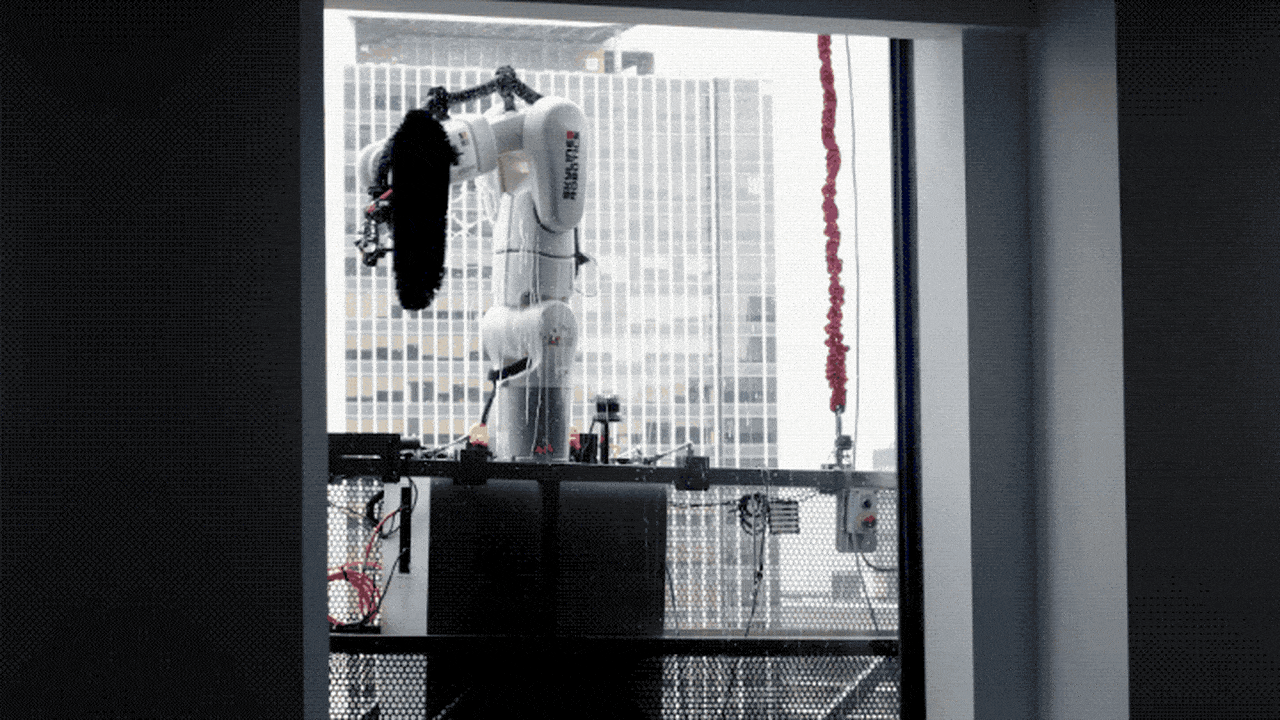
One of the most iconic jobs in the world is heading to the boneyard. The window washers who hang from skyscrapers in New York, London, and other global metropolises are on the brink of becoming a thing of the past. After multiple successful tests runs across the world, Skyline Robotics has installed Ozmo, the world’s first automated window cleaning system in a 45-story office building located at 1133 Avenue of the Americas in Manhattan.
The system combines advanced robotics, artificial intelligence, and sophisticated sensors to clean windows three times faster than humans. It is bound to completely transform the $40 billion window cleaning industry, Skyline Robotics’ President and COO Ross Blum tells me over an email interview. Window washing represents a big slice of the global cleaning services market, which was valued at $392 billion in 2023.
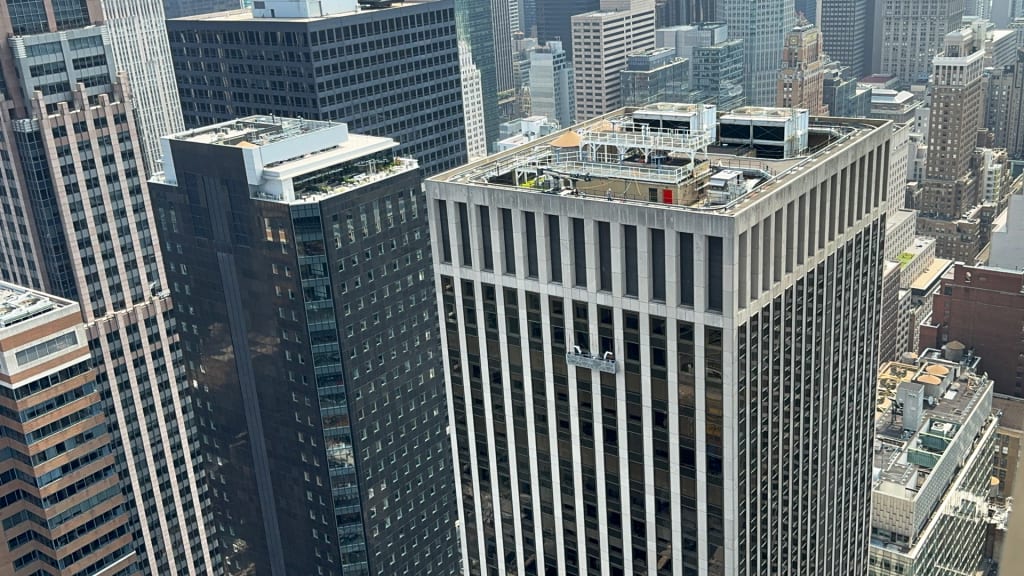
It will be hard news for the humans who make a living cleaning windows, but like other high-risk professions, it’s a necessary change. In the United States, the Occupational Safety and Health Administration (OSHA) documented 88 accidents involving window cleaners over a 15-year period, with 62 resulting in fatalities. In New York City alone, it’s estimated that one out of every 200 window cleaners dies on the job each year. In the U.K., up to 30 serious injuries occur annually among window cleaners.
“We believe that dangerous, dull, and dirty tasks humans complete today are ripe for automation,” Blum tells me. His robotics company aims to automate all work at heights above 16 feet. He believes that there could be a collaborative working model where robots and humans combine their strengths to achieve greater efficiency, particularly in unpredictable environments. But it’s only a matter of time before regulation and technology advance to the point in which no humans are needed.
How Ozmo works
Ozmo is designed to mimic human window washers who are suspended from a platform hanging off the roof of a building. Two robotic arms made by robotics company Kuka handle the cleaning, and are currently supervised by a human operator from the rooftop. Blum explains that human oversight is still necessary due to regulatory requirements. “When you usually see two workers on platforms, what you don’t see is the third person on the rooftop near the equipment lowering that platform. We use that ‘third person’ as the operator of the robots. They position the platform, click the ‘Start Cleaning’ button, and monitor the system.”
The robots are equipped with a Lidar (Light Detection and Ranging) system that maps its surroundings in 3D, allowing the robot to precisely determine its position relative to the building’s facade. The system scans every corner and curve, adjusting in real-time to ensure optimal cleaning. “Ozmo is constantly scanning the environment,” says Blum. “Even subtle movements in the platform or changing reflections from the sun and clouds are accounted for.” Years of algorithm development have ensured that the vision system remains reliable under various conditions.
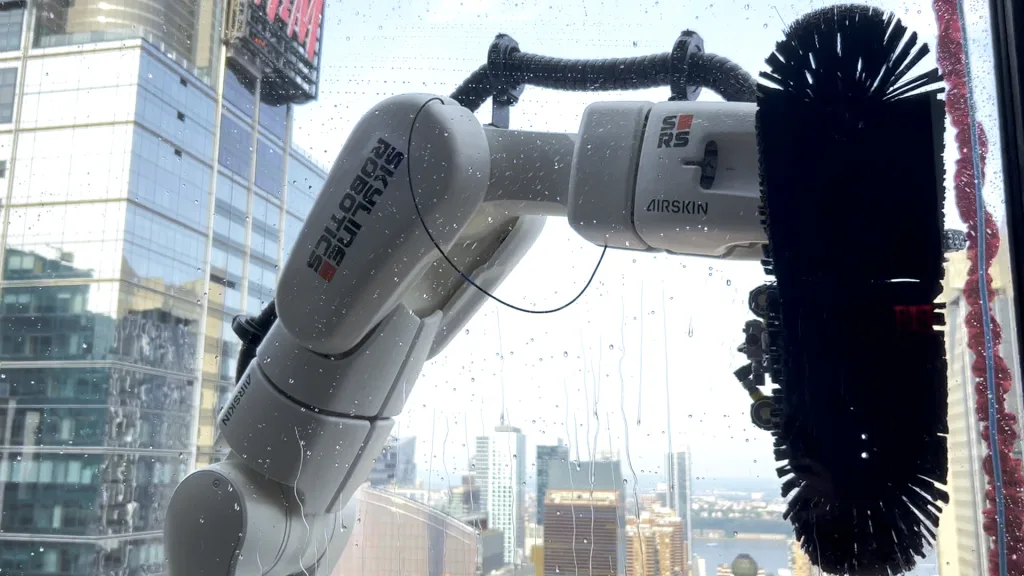
One of the critical features of Ozmo is its “sense of touch.” Using force sensors, the robot adjusts the pressure applied to the windows based on the glass’s fragility. This is crucial for protecting more delicate or complex surfaces.
Additionally, while Ozmo’s hardware remains consistent across buildings, its software and algorithms adapt to various window patterns, elevations, and sills, making the system versatile across different architectural designs. Overcoming technological hurdles like managing data, water pressure, and platform automation at greater heights was key to Ozmo’s development.

The inevitable outcome
Ozmo operates as a Robot-as-a-Service (RaaS) platform, allowing buildings to pay based on factors like square footage and the number of cleaning cycles per year. According to Skyline Robotics, this model offers greater flexibility, allowing buildings to schedule cleaning for longer periods, while providing detailed operational data for each day of service, Blum tells me.
Although Ozmo currently requires a human operator, Skyline Robotics plans to introduce a fully autonomous version, eliminating the need for manual oversight. Blum acknowledges that regulatory requirements may prevent full autonomy in some markets, but he believes the industry is headed in that direction. “The hidden piece of the puzzle for new technologies is building trust,” he says. “Our partners trust us, and we hope that as we continue to develop, we can push autonomy further.”
However, he stresses that the current workforce will remain involved in some capacity. “The men and women who complete this work today are incredible, and we always envision them being part of the future,” he says, adding that future roles could shift towards service calls or other aspects of maintenance.
This sounds like a good short-term solution, but also naive at best. History has demonstrated that automation has erased countless jobs that once were considered fundamental and indispensable for our civilization. It’s only a matter of time before the same happens to something as risky and tedious as window cleaning.
Skyline Robotics sees the deployment of Ozmo in New York as just the beginning. With patents in Japan and Singapore, the company plans to expand globally, bringing its technology to cities like London. “We are on the right path to bringing the future of automation closer every day,” says Blum.

















